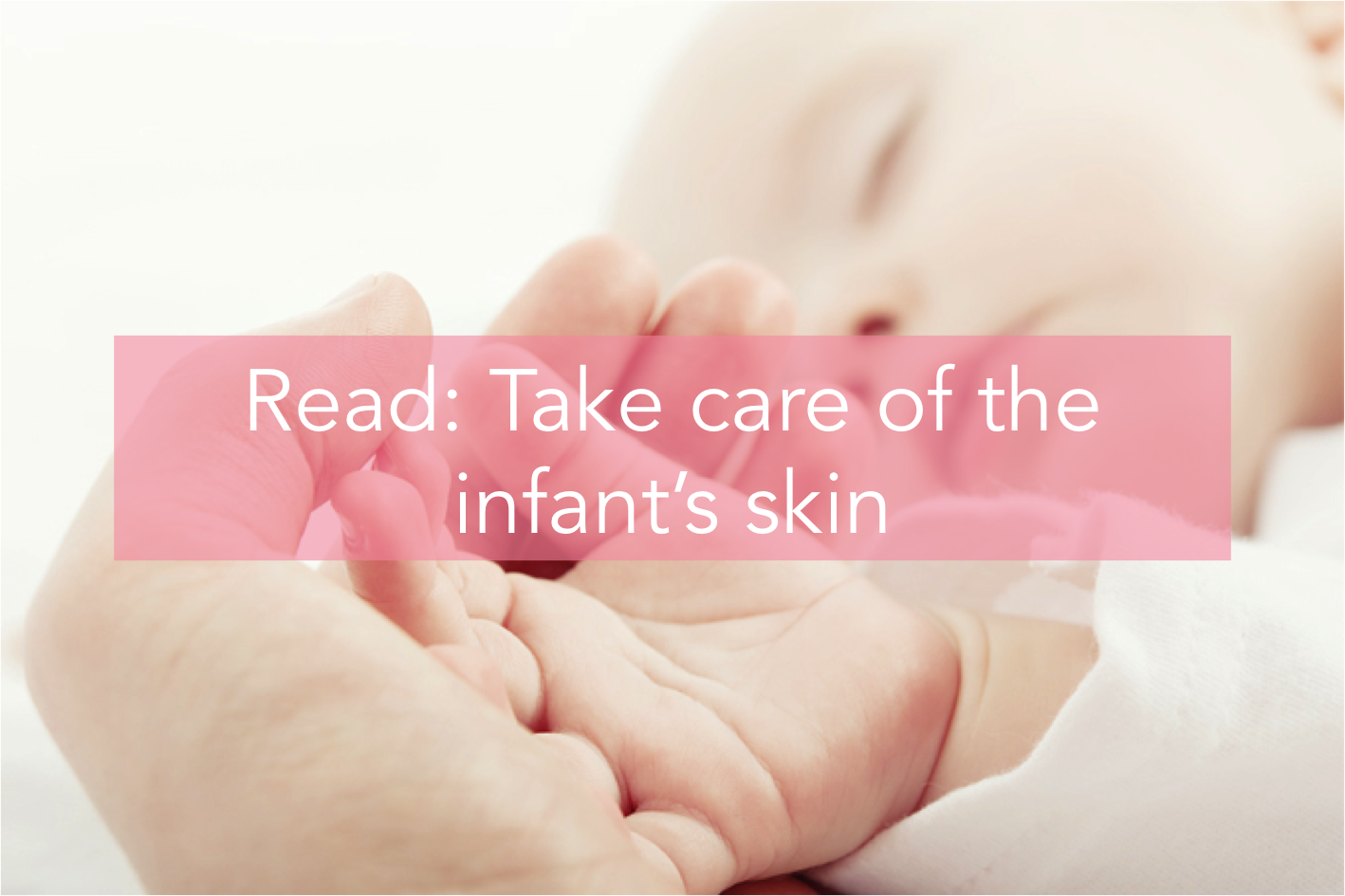The infant’s skin
The skin of infants is different from that of adults, whether in terms of structure or function.
At birth, the infant moves from a moist uterine environment to an aerial environment. During the first months of life, the skin is still immature, its structure and functions evolve. These changes will take place in order to allow the skin to adapt to this new environment and to properly play its role as a barrier to the outside.
Structure and function of infant’s skin
The skin barrier function is weaker in infants than in adults. Structural differences explain this weakness. At the microscopic level the skin cells are smaller in the first months of life, and the different layers making up the skin are much thinner compared to adults’ skin. The sebaceous glands in infants are also immature. They produce only a small quantity of sebum, an essential element to preserve the skin’s hydration.
These factors combined mean that children’s skin is physiologically drier and more sensitive to external aggressions than adults’.
pH and microbiota of infant’s skin
Skin pH is higher at birth (pH between 6.2 and 7.5 in infants versus pH 4-5 in adults). The pH will slowly acidify during the first weeks of life to get closer to that of adults. The formation of this acid mantle on the skin surface is very important to facilitate the anchoring of the skin microbiota and maintains skin health. A skin pH too high (too alkaline) will favor the installation of pathogenic microorganisms on the surface of the skin, and lead to the activation of enzymes that will destructure the already weak barrier function in infants. Children with atopic dermatitis, whose skin barrier is unstructured, also have a very alkaline skin pH (too high compared to normal). It is therefore important to help the pH of the newborn’s skin to acidify by carefully choosing skin cleansing and care products.
Atopic dermatitis in children and excessive hygiene
Children’s skin is therefore more sensitive than adults’. Some skin diseases, such as atopic dermatitis, are emerging in industrialized countries. For example in Japan 13% of children suffer from this disease. Although atopic dermatitis is a chronic, partly genetic disease, many environmental factors such as pollution, diet, or excessive hygiene can trigger or worsen inflammation and skin dryness.
Studies have shown that reducing the frequency of bathing improves the skin condition of newborns.
Therefore, due to the specificity of their skin, it is important to take particular care in the selection of cosmetic products such as shampoos, washing products and other creams applied to the immature skin of infants in order to protect them from irritating phenomena and promote their proper development.




